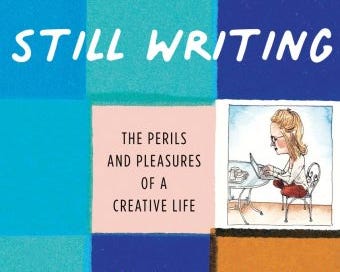I wanted to write Dani Shapiro a letter after finishing the first page of her memoir/self-help/motivational guide/portrait of a writer’s life, Still Writing. I wanted to tell her: “We’re the same! We should hang out! And be best friends!” We’re both only children of older, Orthodox Jewish parents. We’re both writers who analyze family. We’re both obsessed with searching for meaning.
But it was Shapiro’s descriptions of her childhood hypochondria that made me be like, oh my God, this book was written for me.
A good chunk of my daily thoughts are rooted in hypochondria. What if this pork gives me a UTI? What if the makeup remover blinds me? What if I didn’t wash my hands properly and prepare a feces-filled smoothie? Once a month, I still call my father, crying, to ask if he thinks I’m going to die because a drop of Windex may have trickled down from my mirror onto my toothbrush.
I always thought of my hypochondria as something bad, something I should work on in therapy. It must be rooted in something, right? I assumed it was merely a trauma response to the fact that I was a child who had shingles as an eight-year-old and constantly threw up involuntarily. My therapist and I are still theorizing.
But Shapiro reframes hypochondria as “stories I made up [that] were medicinal.” Wait, so all this time I haven’t been just ruminating in fear, but creating medical literature? My monthly breakdown about Windex is…my extremely inventive imagination creating a story so real that even I fell for it?
Though I don’t fully buy that my hypochondria began as a means for me to become a writer, this reframe still felt like validation. Shapiro has written 11 books and often writes for The New Yorker. She is a legit writer. So when she says that she also thought “[e]very headache was a brain tumor” as a child, I sighed in relief. This woman grew up to do what I want to do, became the kind of writer I want to become–and she started out irrationally fearing for her life, just like me.
I felt even more seen when Shapiro details her writing process as “thousands of days of trying, failing, sitting, thinking, resisting, dreaming, raveling, unraveling.” Over the past few months, I’ve been berating myself that I’m not a more efficient writer. I keep asking myself: why can’t you bust out an article in two hours?
Reading Still Writing made me realize that writing isn’t supposed to be efficient. It’s okay that it takes me two days to write an article, even one that’s a straightforward explainer on car insurance. Actually, Shapiro would probably think it was weird if it took me any less time!
Still Writing made me feel legitimized as a writer. If you aren’t a writer, I wonder if you’ll enjoy this book. It invigorated me and made me want to write. I hope it does the same for you.
A few other cool things:
Speaking of writers, my friend Blair Mlotek wrote a super fun, short rom-com story for Heartbeat, a newsletter that brings one of these stories to your inbox every other Friday (subscribe, I do!).
The Emily Henry profile is worth the read.
My work this week: You can hear a podcast episode of me and my math education friends describing our trip to a prison to celebrate Pi Day (more details on that in next week’s newsletter). I also wrote about buying a car in a recession, how credit unions are connecting with Gen Z and Ontario’s move to ban real estate NDAs.
PS When you buy a book through links in this article, I earn an affiliate commission, which is really nice. So thanks!



